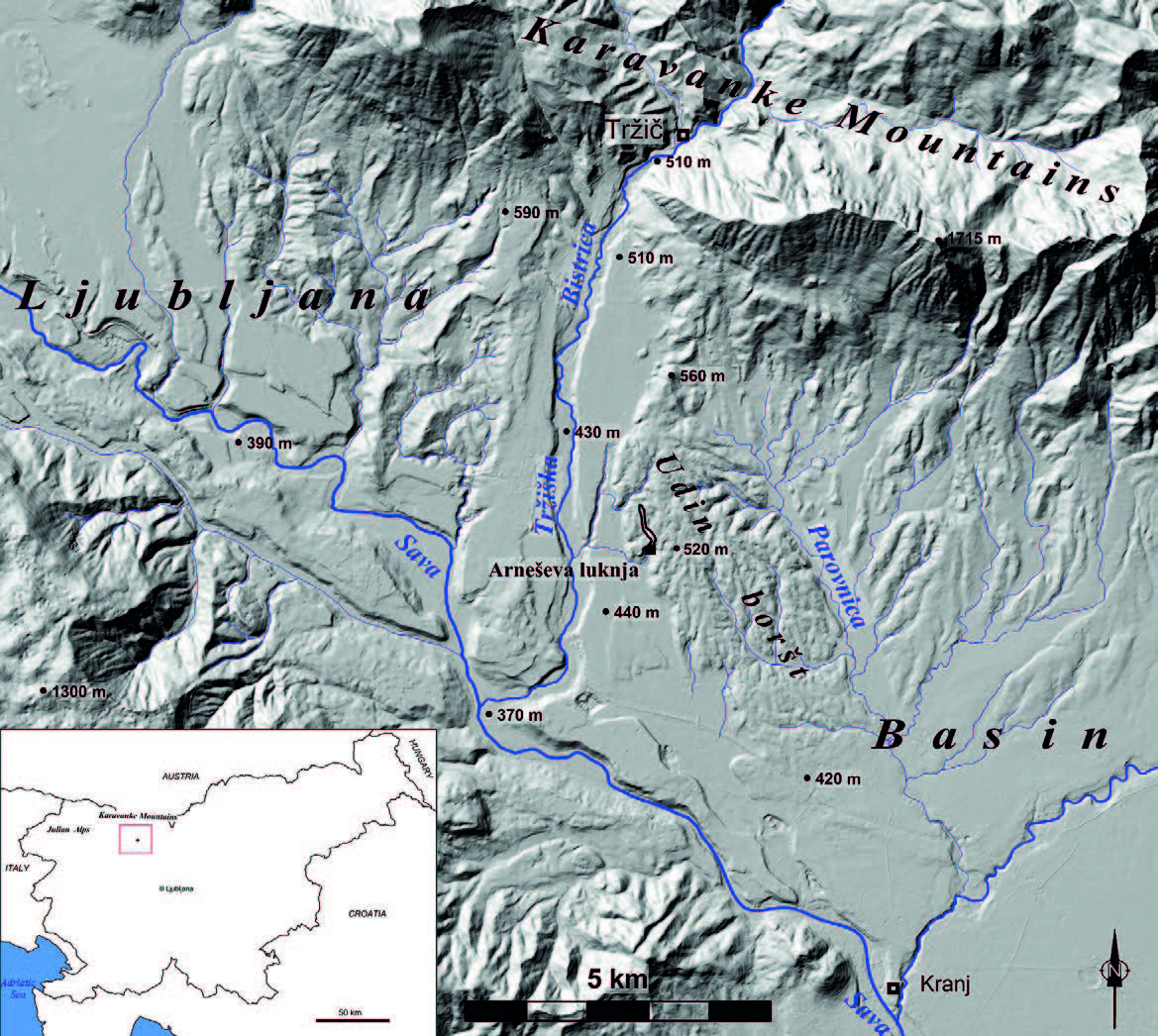Dating of the Udin Boršt conglomerate terrace and implication for tectonic uplift in the northern part of the Ljubljana Basin (Slovenia)
DOI:
https://doi.org/10.3986/ac.v44i2.2033Abstract
EN:
The northwestern part of the Ljubljana Basin is filled mostly with fluvioglacial sediments deposited by rivers coming from Alpine mountain groups. The Tržiška Bistrica River, flowing from the Karavanke Mountains, has deposited a large alluvial fan consisting predominantly of carbonate pebbles with subordinate amounts of siliciclastic pebbles. The oldest infill, cemented into a conglomerate terrace named Udin Boršt, overlies an erosional surface on Oligocene mudstone. The thickness of the conglomerate terrace is up to 50 m. The conglomerate terrace is well karstified; the surface is dissected by numerous dolines and covered with a thick soil sequence. There are several caves. The most important are spring caves formed on the contact with the underlying impermeable basement. Samples of quartz pebbles were taken from the walls and ceiling in the 815 m long spring Arneševa Luknja Cave for cosmogenic nuclides burial age dating. The calculated burial age yielded an age of 1.86 ± 0.19 Ma that gives (i) the age of the oldest known infill in the Ljubljana Basin and (ii) indicates the time of change of the sedimentary system in the Basin from erosion to deposition. The age of the Udin Boršt karst and caves is significantly younger. The age dates provide grounds for a first relatively firm estimate of the long-term tectonic uplift of the Udin Boršt terrace to be between 0.06 and 0.04 mm/yr. This tectonic uplift rate may be related to the activity of the regional Sava Fault.
SLO:
Severozahodni del Ljubljanske kotline pokrivajo večinoma fluvioglacialni sedimenti, ki so jih odložile reke iz alpskih gorskih skupin. Tržiška Bistrica, ki priteka iz Karavank je odložila velik vršaj. V njem prevladujejo karbonatni prodniki z manjšim deležem siliciklastičnih prodnikov. Ta najstarejša zapolnitev, sprijeta v konglomeratno teraso Udin boršt, leži na erozijskem površju oblikovanem v oligocenskih glinovcih. Debelina konglomeratne terase je do 50 m. Konglomeratna terasa je dobro zakrasela, površje pa je razčlenjeno z vrtačami in pokrito z debelo plastjo prsti. V njej je več jam, med katerimi so najpomembnejše izvirne jame, ki so se oblikovale na stiku z neprepustno podlago. V 815 m dolgi Arneševi luknji smo vzeli iz sten in stropa jame vzorec iz kremenovih prodnikov za določitev pokopne starosti prodnega zasipa s kozmičnimi nuklidi. Izračunana starost prekritja sedimentov je 1.86 ± 0.19 Ma. Ta datacija določa (i) starost najstarejše sedimentne zapolnitve v Ljubljanski kotlini in (ii) čas spremembe v sedimentacijskem sistemu kotline iz erozije v sedimentacijo. Starost kraških oblik in jam v Udin borštu je znatno mlajša. Starost sedimenta daje tudi osnovo za relativno trdno določitev tektonskega dviga terase Udin boršta na 0,06 do 0,04 mm/yr. Ta tektonski dvig je verjetno povezan z premiki ob regionalnem savskem prelomu.
Downloads

Downloads
Published
How to Cite
Issue
Section
License
Authors guarantee that the work is their own original creation and does not infringe any statutory or common-law copyright or any proprietary right of any third party. In case of claims by third parties, authors commit their self to defend the interests of the publisher, and shall cover any potential costs.
More in: Submission chapter




